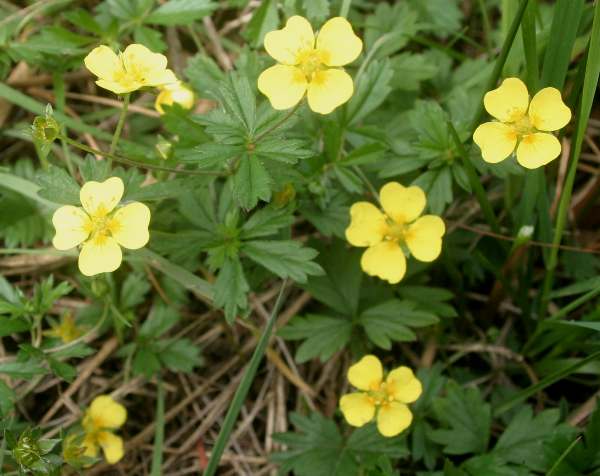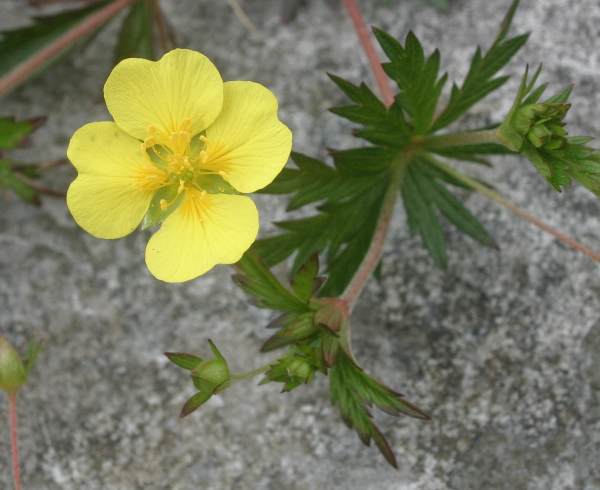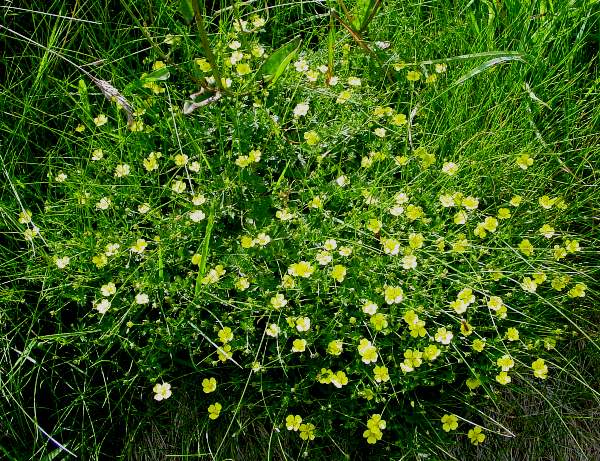Potentilla erecta - Tormentil
Phylum: Magnoliophyta - Class: Equisetopsida - Order: Rosales - Family: Rosaceae

Tormentil is an indicator of acid soil, and it is a frequent find in most upland areas of Britain and Ireland.
Description
Tormentil has tiny flowers, usually 1cm to 1.5cm across and the colour of buttercups. This wildflower is easily distinguished from a buttercup because, although its leaves are similar to those of buttercups, the flowers of Tormentil have just four petals, unlike most other members of the botanical family Rosaceae, which have five. (Buttercupsare members of the family Ranunculaceae, and they have five petals on each flower.)

Distribution
This wildflower is widespread and common throughout Britain and Ireland, and is found also across most of northern Europe.
Habitat
Tormentil is found in both dry and wet habitats but it is most common in areas of acidic or at least neutral soil. This wildflower does not thrive in strongly alkaline areas such as chalk downland, although we have photographed it in the Triglav National Park in Slovenia, an area which is predominantly limestone. This wildflower is particularly common on rocky mountain slopes and beside upland streams on the western side of Britain. Tormentil is also commonly seen on moorlands and even in some lowland meadows.
Blooming Times
In Britain and Ireland you will see plenty ofthese pretty little summer wildflowers from June right through until the end of September.

Uses
As with other Potentilla species, the high tannin content of this plant has been exploited in herbal medicines. The roots of Potentilla erecta have also been used in the past to produce a dye for reddening leather. Tormentil Red, as the dye is called, was also the basis of a red ink.
Etymology
Potentilla, the genus name, means 'powerful, despite its small size' and is a reference to the claimed medicinal value of plants in this genus. The specific epithet erecta means erect or upright.
Similar Species
Creeping Cinquefoil Potentilla reptans is similar but its flowers have five petals.
Silverweed Potentilla anserina has larger yellow flowers with five petals; its leaves are not palmate.
The Tormentil plants shown on this page were photographed in West Wales during June.
Sue Parker's latest ebook is a revised and enlarged second edition of the acclaimed Wildflowers in the Algarve - an introductory guide. Full details here...
Buy it for just £3.95 on Amazon...
Please Help Us: If you have found this information interesting and useful, please consider helping to keep First Nature online by making a small donation towards the web hosting and internet costs.
Any donations over and above the essential running costs will help support the conservation work of Plantlife, the Rivers Trust and charitable botanic gardens - as do author royalties and publisher proceeds from books by Pat and Sue.



